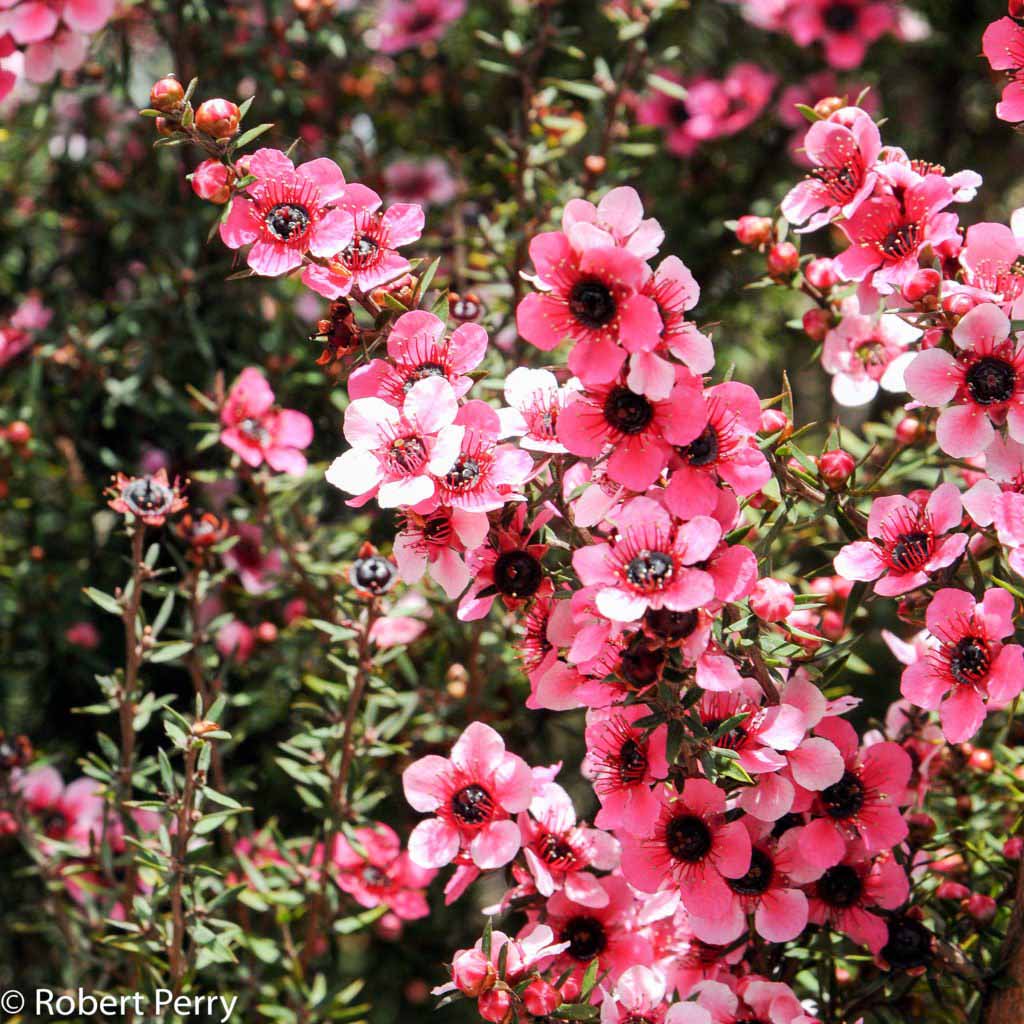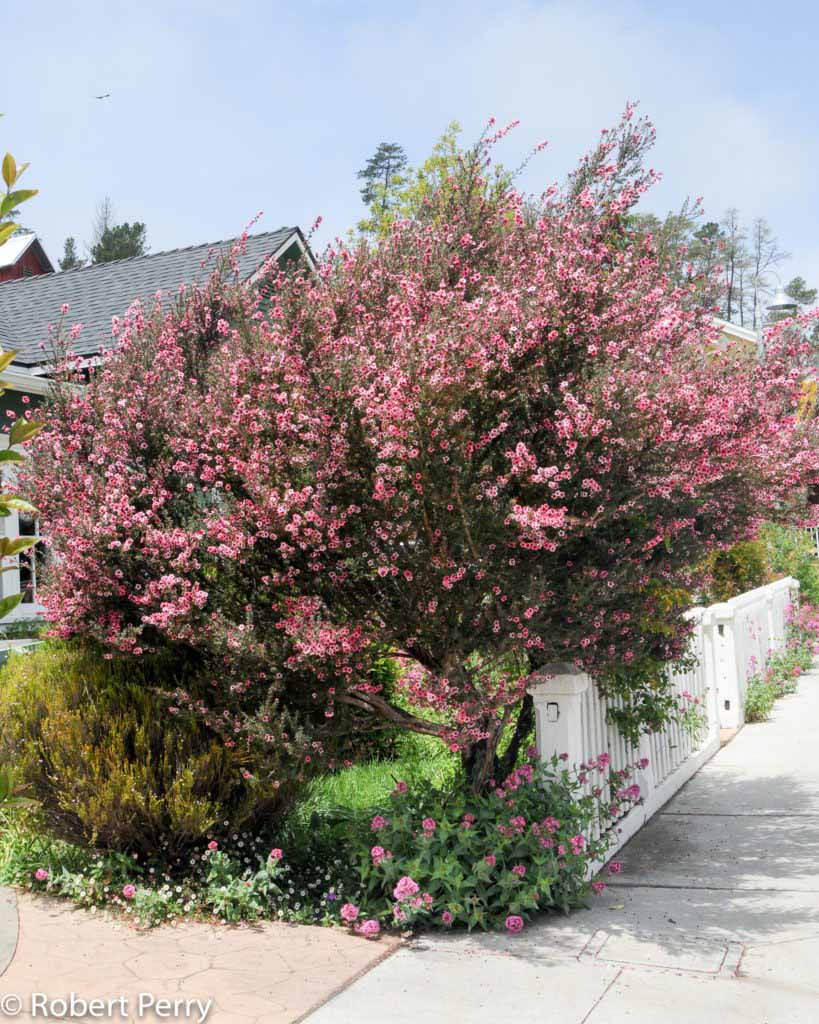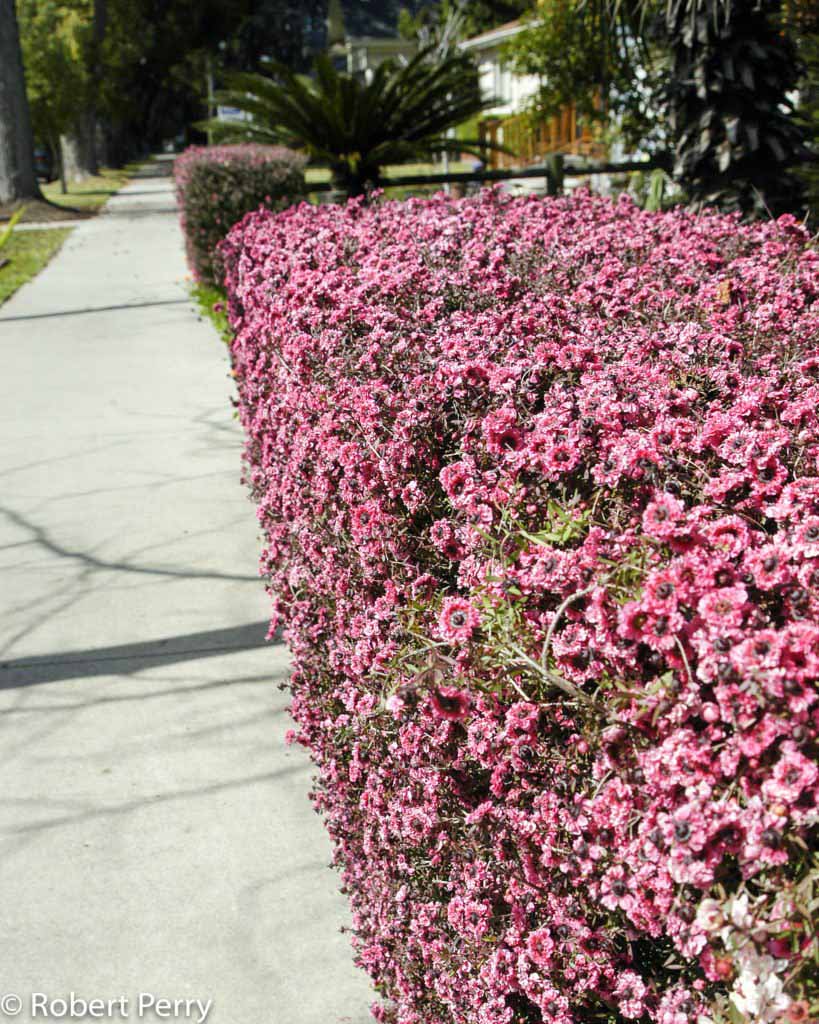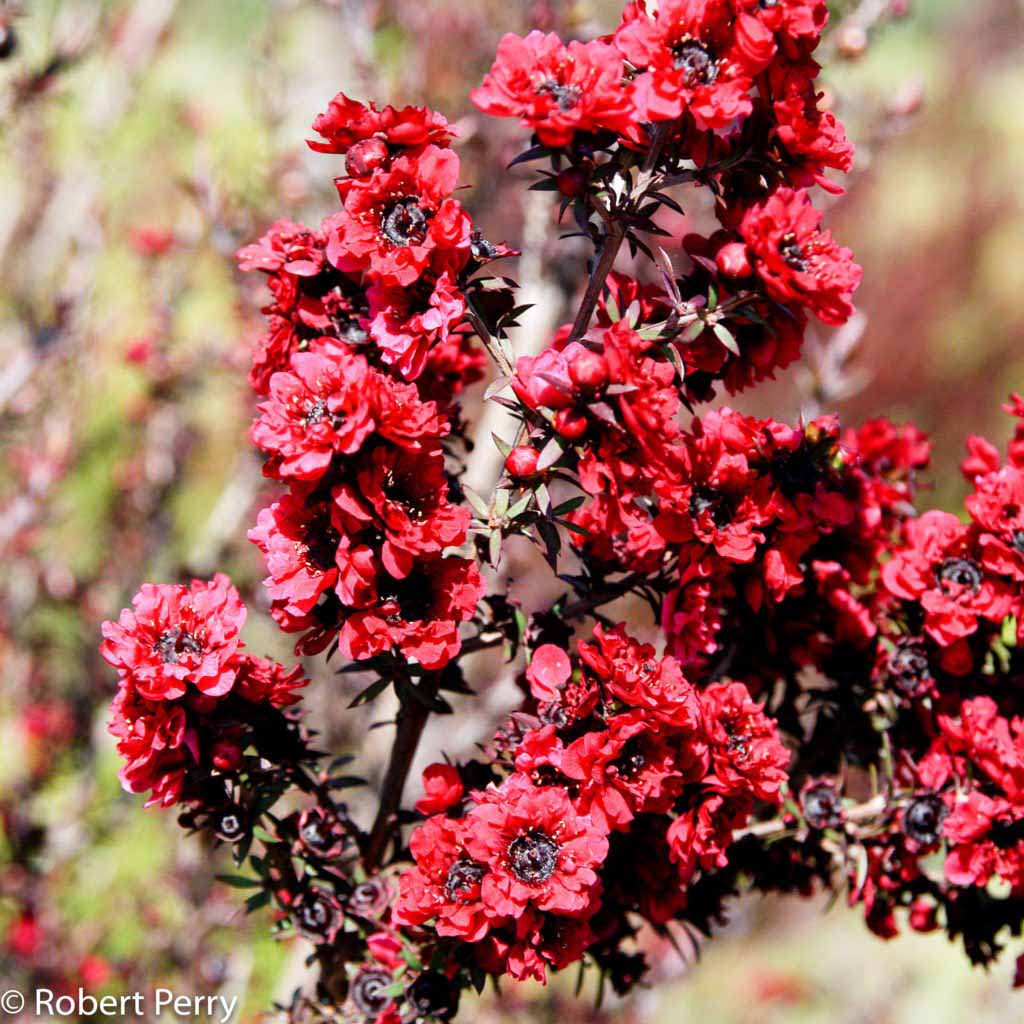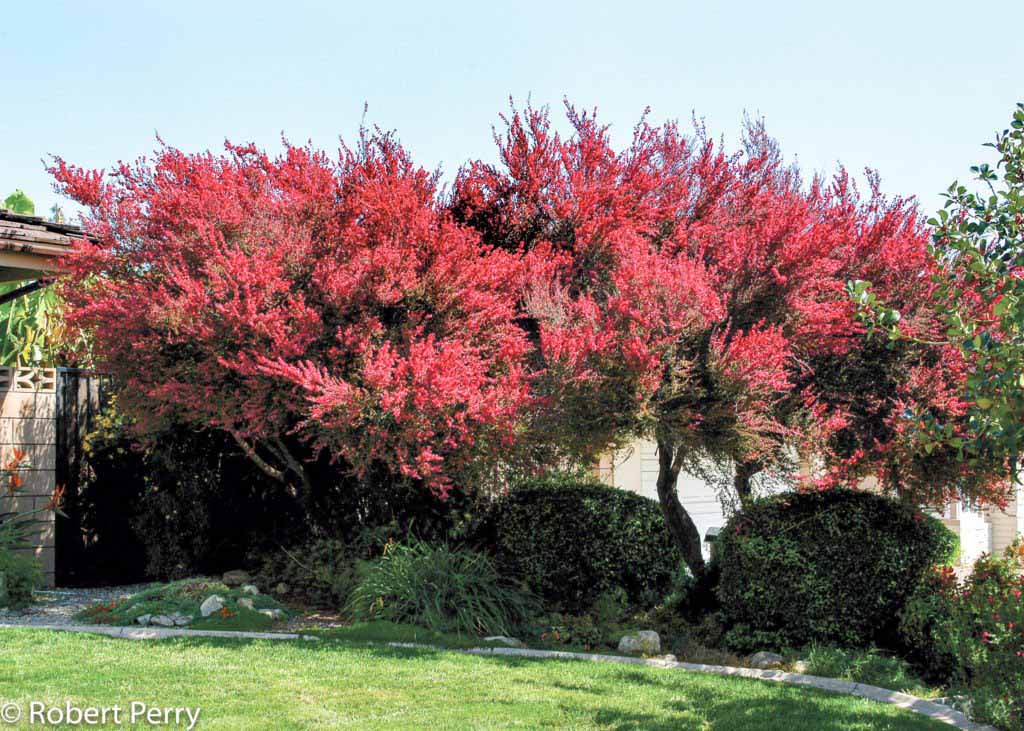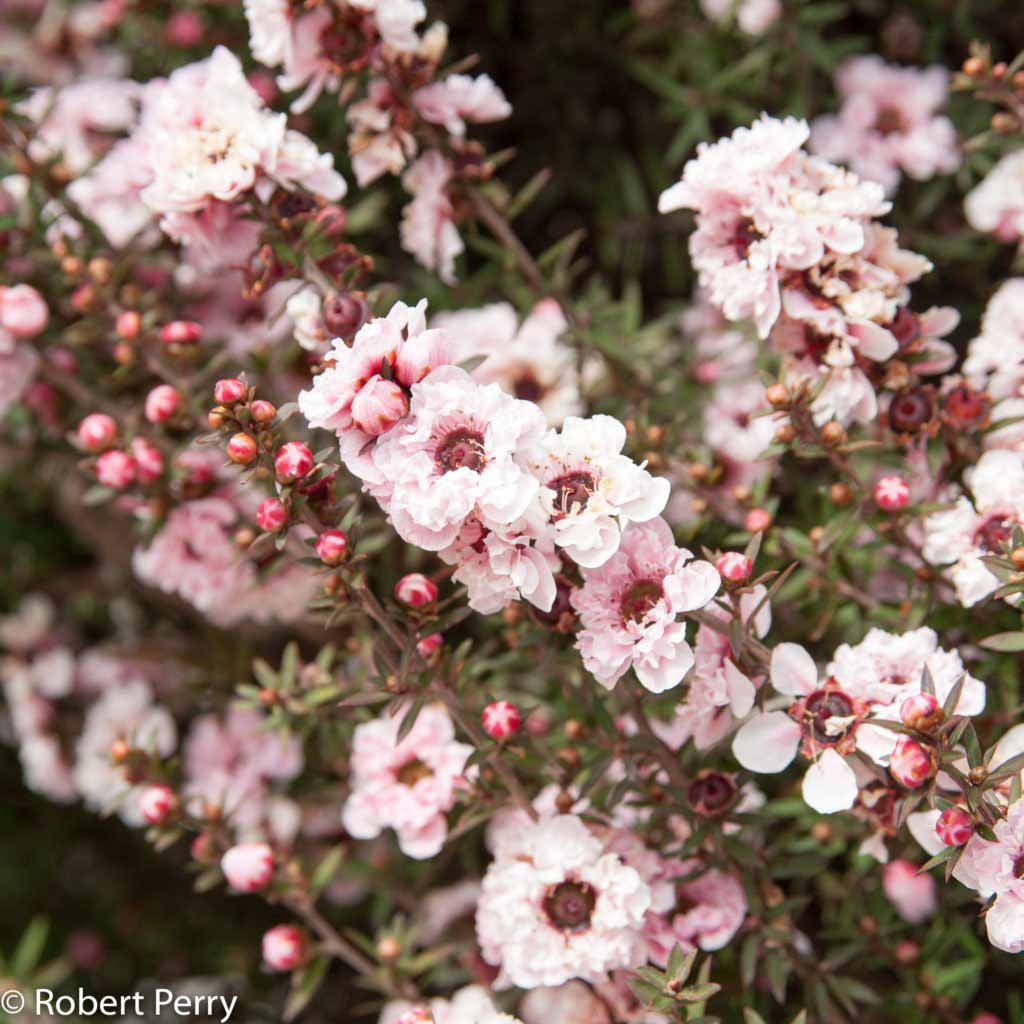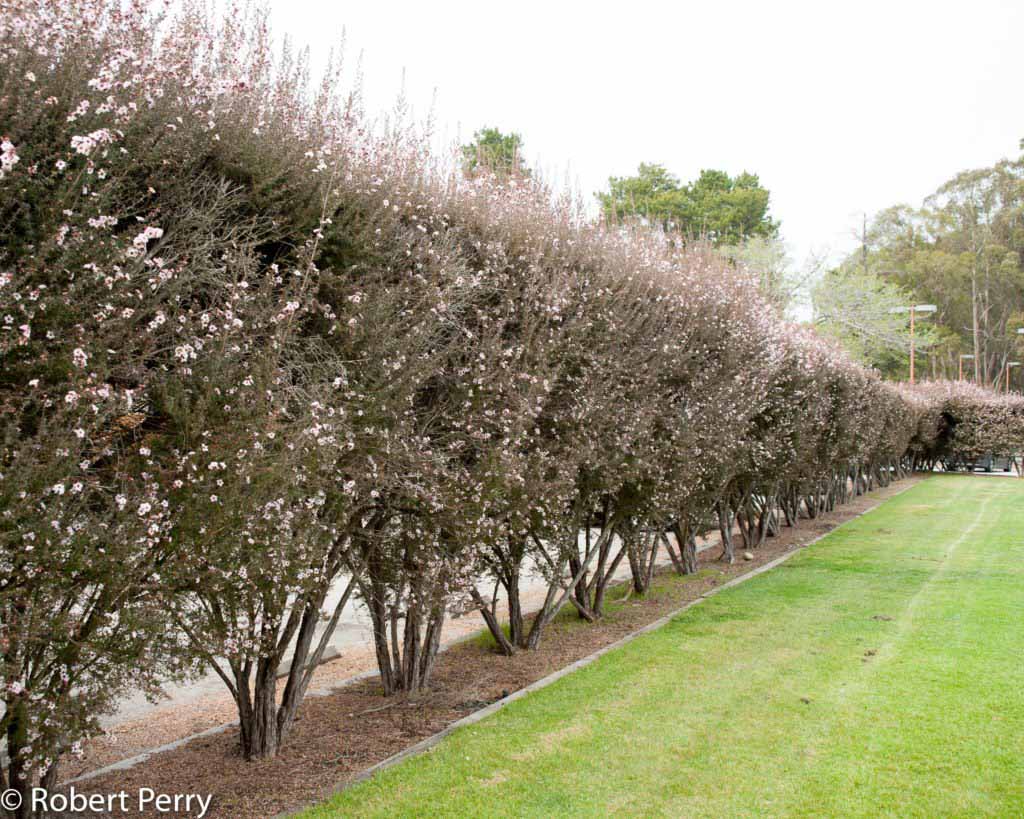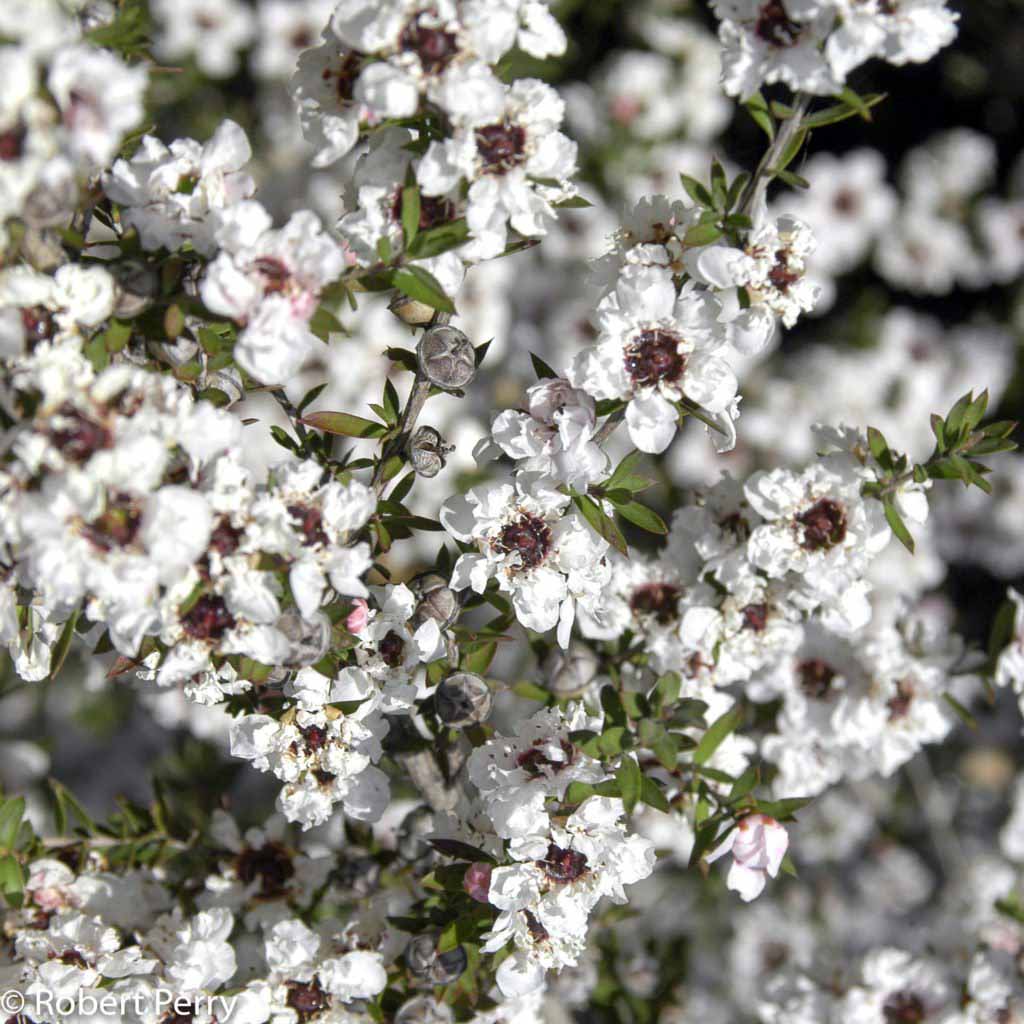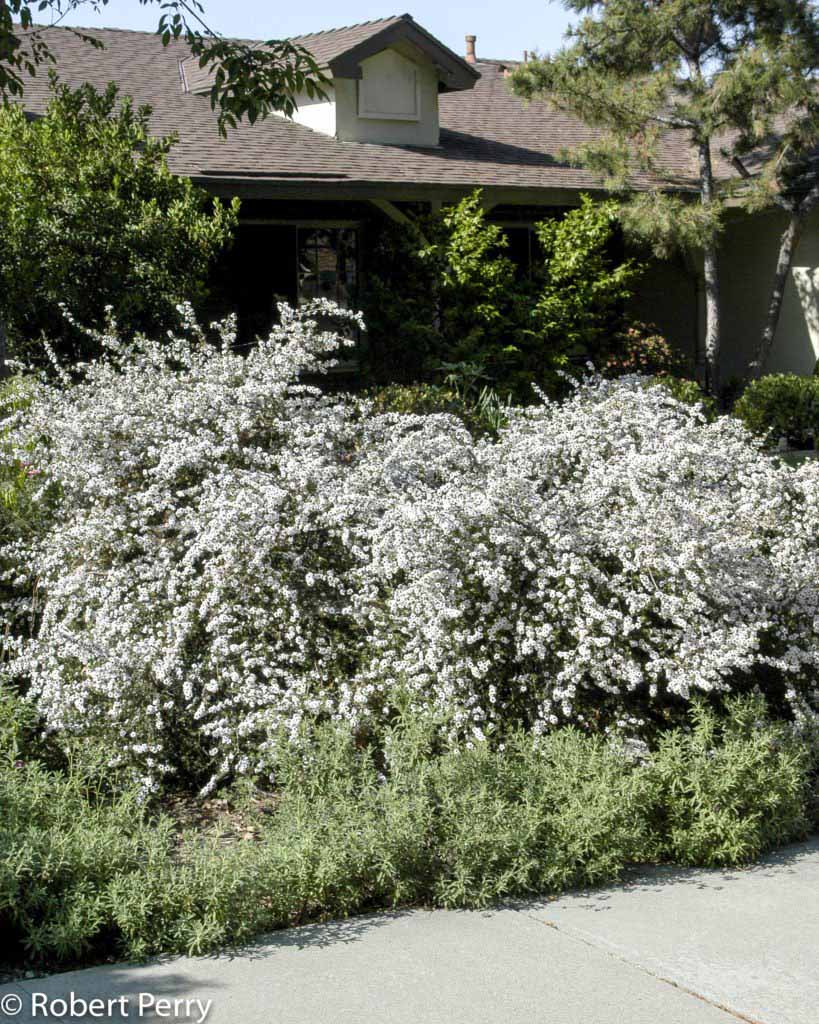Please note:
For most situations, we would not recommend installing this plant in new gardens, landscapes, or plantings in southern California.
Top plants to consider instead of New Zealand tea tree depending on the sized desired, especially for background hedges include, hollyleaf cherry, lemonade berry, sugar bush, coffeeberry, and toyon. Like New Zealand tea tree, these can all tolerate pruning to maintain as a hedge of almost any size.
This plant profile is included in this site as a reference for two primary reasons:
- If you already have this plant in your landscape, this information can be used to know how to care for it.
- If you already have this plant in your landscape, you can use this information to learn which of our recommended plants have the same recommended watering needs, making them potential choices for grouping together if you will be adding new plants to the existing area.
In general, instead of this plant, we recommend planting appropriate California native plants whenever possible.
In addition to their beauty, California native plants offer the most additional benefits beyond just low water use, including habitat for the birds, butterflies, and pollinators who evolved here with them. This adds value and beauty in your landscape beyond just a pretty plant, allowing the landscape to actively contribute to the environment instead of just using less water. You can find our top recommended native plant choices on our Plant Finder by selecting “California Native” and learn more about California native plants here.
To learn what exactly California native plants are and how they are different from other low water plants, visit this link.
For visual interest or other reasons, some people may also want to mix in other non-native low-water demanding plant choices even though they do not have the same ecological value as native plants. For that reason, we feature a number of non-native waterwise selections on this site as well. However, we see native plants as the best “go to” for most landscape or garden choices! We encourage people to consider planting at least 50% of their landscape to native plants. See our Garden Designs section or visit our Waterwise Demonstration Garden in Montclair for plenty of inspiration.
————————————————————————————————————————————————
The New Zealand tea tree is native to the North and South islands of New Zealand where it grows in many types of habitats, ranging from lowland bogs and sandy coastal headlands, to forest and mountain scrub-lands over 3,500 ft. in elevation. These are mostly cool and moist habitats. The true species is highly variable in form and is not considered to be of value for ornamental use. Instead, many attractive cultivars have been developed that range from prostrate and dwarf forms, to upright shrubs and small trees. They are all characterized by small prickly foliage, a dense branching habit and tiny colorful flowers. Flowers occur from winter through spring.
More popular cultivars of New Zealand tea tree are often shrubs, 10-12 ft. high, that are used for screening or flowering accent plants. Mature plants can be pruned to reveal sculptural branching. They grow best in full sun, adapt to many types of soils and prefer with moderate amounts of supplemental moisture during the dry months of the year. More common cultivars include: L. s. ‘Apple Blossom’ has double pink flowers, L. s. ‘Helene Strybing’ has single pink flowers, L. s. ‘Ruby Glow’ has double blood-red flowers, and L. s. ‘Snow White’ has double white flowers.
